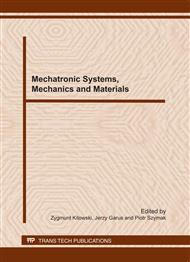p.222
p.232
p.238
p.250
p.261
p.269
p.281
p.288
p.297
Glued Functions - Based Assessment of Interpolation Accuracy of Self-Ignition Engine Real Indicator Diagram
Abstract:
The paper aims to provide an analysis and accuracy assessment of the interpolation of real indicator diagrams, averaged over 50 runs, performed with the use of glued functions which analytically describe the form of those diagrams. The analysis and accuracy assessment were carried out for values of mean indicated pressure p¬i and indicated efficiency determined for real and interpolated diagrams. The paper also presents the analysis and assessment of error in the determination of the mean maximum pressure value in the working cycle of the AD3.152 UR engine fuelled by diesel oil, pure methyl ester of rapeseed oil fatty acids FAME and the blend of both fuels marked B20. When the indicator diagram was taken experimentally, the engine operated in the mode of external speed characteristics at the crankshaft rotational velocity n=2000 rpm.
Info:
Periodical:
Pages:
261-268
Citation:
Online since:
November 2011
Authors:
Keywords:
Price:
Сopyright:
© 2012 Trans Tech Publications Ltd. All Rights Reserved
Share:
Citation:


